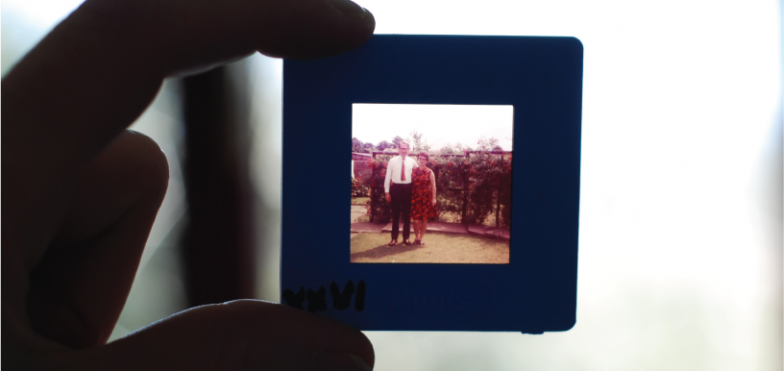Written By: Eric Hinson @expainify
Mar 21, 2016
Which of these statements is more interesting to you?
“Coffee is a beverage brewed from the ground, roasted seeds of the coffee berry. Coffee has been grown since the 15th century in the Arabian Peninsula.”
Or this one?
“Legend has it that coffee was discovered by an Ethiopian goatherd. One day, Kaldi noticed his flock munching on the red berries of a tall shrub—and frolicking energetically to the next bush. He tried a few of the berries for himself, and shortly he was dancing right along with the goats. A monk who happened to see Kaldi’s coffee-induced dance decided to gather some berries for his brothers – who found that the fruit took them to a higher spiritual plane.”

The second one sounds better, right? Not to mention you’ll never forget how coffee was (possibly) discovered. That’s the power of story over facts.
Now for the tough question: Which example does your brand story resemble more?
Hopefully, this exercise served as a reminder that you aren’t a collection of products and features.
Stories cause deep emotional triggers and speak to us all the way down to a basic, primal level. Storytelling, on the other hand, has the power to influence your audience by making connections, illuminating their struggles, and touching on their passions.
Facts can be interesting, but they’re rarely moving. They might prove a point, but they aren’t going to make your visitors feel deeply.
If that’s the case—why are most landing pages, email blasts, and marketing videos filled with copy that relays only what your product or service can do… which are, you know, facts?
You (probably) already know people buy with their emotions. Which is exactly why you need to harness storytelling.
Let’s talk about how to do just that.
Find the Intersection

Your story comes to life at the intersection of your brand’s identity and your audience’s needs. Without successfully connecting your company to the lives of those you hope to help, you won’t gain traction.
Imagine if Willie Wonka had never found poor Charlie and changed his life. Or if Westley had never made it back to the Princess Bride before she married the wrong man. Could you even live in a world where Han and Chewie didn’t help Luke blow up the Death Star?
You and your audience are in this delicate dance where you’re both heroes. You come to them in the midst of their pain points, solve their problems, and give them the tools to become heroes themselves.
A story that doesn’t emotionally connect your solution to their problem isn’t a story. It’s information.
Story Tip: Tell your audience what they’re feeling, explain how you deliver a solution, and paint a world where you live together in harmony. Of course, when you tell them what they’re feeling – make sure you know what you’re talking about. The worst brand stories are the ones solving a problem that doesn’t exist.
Tell a Story That’s Bigger Than You
We’ve already established you’re more than your features. Your story is also bigger than your company.
Here’s what that means.
The story you tell goes beyond your products or services and connects to the wider world. A good story always has an opportunity to start a movement. Think about the film examples a little further up the page, they all have cult followings.
So do some brands—why?
Because they have a great story, a great group of customers, and common goals that they’re tackling together. That’s why you start a platform to confront and improve a known issue related to your industry, like Patagonia did. Or rally around a great cause, like TOMS does.
Rallying around an existing cause is a popular method among many entrepreneurs. It’s led to great charities, like Pencils of Promise, getting excellent exposure to make a larger impact.
But Don’t Be Afraid to Get Personal

If you’re a small company, it’s tempting to hide behind anonymity in the hopes people will think you’re a larger company.
But don’t be afraid to let your audience know who you are. In fact, showing your audience who you are is one of the most effective ways to increase your social share of voice. If you’re afraid of the spotlight, you can start by answering questions to get the juices flowing.
Who are you as a founder?
Tell your audience the path that led you to their inbox, and why you came up with your gizmo in the first place. It may not be the coffee bean, but people relate to stories. So make it interesting.
How did you get here?
PayPal started out as a podcasting company, and Nintendo sold playing cards. What kind of twists, turns, or pivots did your company or even your products take to get where you are today?
What makes your team amazing?
Your team is just as much a part of your story as you and your customers. Don’t just put silly animations on your site telling how many cups of coffee they drink. Take pictures of them in the office, record them talking about why they love working for the company… you can even let them help tell your story!
Tell Your Story by Way of Analogy
Part of telling your story is getting your audience from their current understanding (point A) to where they need to be (point B – or more often, point X or Y). One of the most powerful ways to help your audience “get it” is through metaphor.
Metaphors activate the same parts of the brain as story.
It’s essentially creating a quick picture instead to make a comparison. Kind of like our Han/Luke bit from earlier was to help you understand bridging the gap between the helped and the helper.
Story Tip: Metaphors are more effective when the reader can relate them with their other senses (smell, sound, etc.) or even memories. Use descriptive words, themes, and other tidbits to make them that much more powerful.
Spill Your Story All Over the Place
Story isn’t just copywriting. Or video. Or whitepapers. Your brand story should bleed into everything you do.
Jeff Bezos once said, “Branding is what people say about you when you’re not in the room.”
Try arguing with die-hard fans that their favorite movies are just stories. They’ll laugh at you. They’re obsessed with the universe, they quote their favorite lines, the plot advances in their mind beyond the words of the script and shots on the screen. When the movie goes off, they’re still in that world.
That should be your goal for your brand.
It should move into your customers’ everyday thinking, and into your co-worker’s mindsets. It should slowly begin to roll off of their lips to create an infectious environment of referrals and satisfaction.
It should begin to see results that are measured by impacted lives and not just balance sheets. It’s not your content, it’s your brand. And it has a story.
Putting It All Together

I know what you’re thinking.
You’re thinking “Cool, thanks for all these general storytelling tips. But what does brand storytelling look like in practice? How do I do this?”
I’m glad you asked. Let’s see what it looks like for you to apply these suggestions in real life.
Let’s say you make granola, and you’re really passionate about inspiring people to live healthier lives by providing them with organic, all-natural food choices.
But for some reason, people just aren’t catching on. They’re not interested in your brand. You know your granola is delicious and there’s a huge market opportunity for you—so what do you do?
Tell a better story.
First, find that intersection.
Maybe you thought that your primary demographic would be hippies and crunchy types, but you’re realizing that the people who can’t get enough of your granola are actually upper middle-class fitness buffs.
So, what’s the story that matters to them? They probably don’t care as much that you’re helping the environment and reducing your carbon footprint (which could certainly be true); instead, the story that would stick is that when you eat healthy, earth-friendly foods, you feel better. And when you feel better, you perform better.
In other words, by eating your granola, those fitness buffs can run, lift, cycle, or CrossFit—better.
This is also your opportunity to tell a bigger story.
See, it’s not just about granola. It’s about living healthier, balanced lives—an approach that Nature Valley is really great at.
But you also shouldn’t shy away from getting personal. Tell your customers why you started a granola company. Where are you from? What are you passionate about? Where is your granola made? Why do you exist? Post pictures of your team to social media and give your audience a look behind the logo.
Because when you do that, your audience will likely identify with your story and your passions which makes them more likely to get on board and love your brand.
Because everyone already knows what granola is, you may not need to use an analogy to get people to understand what you do. But this is where your brand comes in. What do your brand name, logo, and color palette say about you? What emotions and images do they evoke?
Whatever that story is, you need to spread it everywhere.
Your story about fitness, health, and wellness should shine through every aspect of your company from your packaging, to your website, to your email offers. Every touchpoint you have with your customers is a chance to reinforce your story!
I realize you probably don’t make granola. You may create software or offer business consulting instead. But trust me, these strategies work for any business.

The fact is, humans are storytelling creatures, so we will always filter information through the lens of narrative.
The companies who understand that, and tap into the power of story, will reap the benefits.
So, what’s your story? What storytelling tips do you use in your business? Let us know in the comments below.
